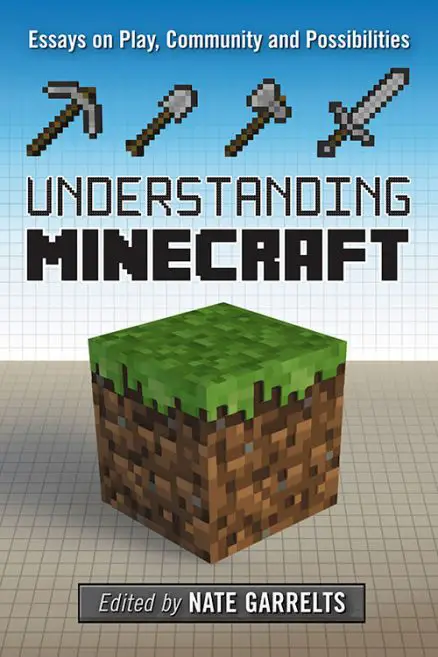Understanding Minecraft’s World Generation: Biomes And Structures

The world of Minecraft is vast, ever-changing, and filled with diverse biomes and intricate structures. This dynamic world generation system is crucial to the game’s exploration and survival, providing players with a wide range of terrain, resources, and challenges.

Biomes:

Biomes are distinct regions in Minecraft’s world, each with its unique climate, terrain, vegetation, and mob spawns. These biomes range from lush forests and sunny plains to barren deserts and icy tundras. Some of the most common biomes include:
-
Forest: Forests are dense areas filled with trees, providing valuable wood and shelter for animals.
-
Plains: Plains are open grassy areas, perfect for farming and animal husbandry.
-
Desert: Deserts are hot, dry regions with sand dunes and few vegetation. They’re often home to cacti and desert-adapted mobs.
-
Tundra: Tundras are cold, snowy biomes with frozen lakes and sparse vegetation. Polar bears and snow golems inhabit these regions.
-
Ocean: Oceans cover a large portion of Minecraft’s world, with various marine life and underwater resources.
Structures:
Structures are naturally generated constructions found throughout Minecraft’s world, adding depth and immersion to the gameplay. These structures include:
-
Villages: Villages are populated by villagers and contain houses, farms, and other buildings. Players can trade with villagers for goods and resources.
-
Temples: Temples are ancient structures containing valuable loot and sometimes puzzles or traps.
-
Strongholds: Strongholds are hidden underground fortresses, often with libraries containing End Portal Frames, leading to the End dimension.
-
Mineshafts: Mineshafts are abandoned underground tunnels, providing access to ores and other resources.
-
Ravines: Ravines are deep, steep-sided valleys often filled with lava or water, creating natural obstacles and challenges for players.
Impact on Gameplay:
The combination of biomes and structures in Minecraft’s world generation significantly impacts gameplay, providing various opportunities and challenges for players:
-
Resource Gathering: Biomes and structures offer diverse resources such as wood, stone, ores, and unique items. Players must explore and adapt to different environments to gather the materials needed for survival and crafting.
-
Exploration: The vast and ever-changing world encourages players to explore, discover new biomes and structures, and uncover the secrets hidden within.
-
Survival and Building: The variety of biomes and structures provides distinct challenges and opportunities for survival and building. Players must find suitable locations for bases, farms, and other constructions, considering factors like climate, resources, and defense.
-
Mobs and Interactions: Biomes and structures influence the behavior and distribution of mobs, the living creatures in Minecraft. Different biomes may be home to specific mobs, and structures can act as mob spawners or shelters.
-
Adventure and Puzzles: Some structures, like temples and strongholds, contain puzzles, traps, and hidden loot, offering exciting challenges for players to overcome.
Minecraft’s world generation is a complex and dynamic system that continues to surprise and engage players. The combination of biomes and structures creates a diverse and immersive world for exploration, survival, and creativity, making Minecraft a truly unique and captivating game.

Minecraft’s world generation is a complex and fascinating topic, and this article does a great job of explaining the basics. I especially appreciate the clear and concise language, which makes it easy to understand even for someone who is new to the game.
This article is a waste of time. It’s full of errors and doesn’t even provide any new information.
I found this article to be very informative. It helped me to understand the different types of biomes and structures in Minecraft, and how they are generated. I also appreciated the links to other resources for further learning.
I disagree with the author’s claim that the jungle biome is the most dangerous in Minecraft. I think the nether is much more dangerous, with its lava lakes, ghasts, and blazes.
Ironic that an article about Minecraft world generation is so poorly written.
I couldn’t help but notice the numerous grammatical errors in this article. It’s clear that the author didn’t bother to proofread their work before publishing it.
LOL, this article is so bad that it’s actually funny.
This article was very helpful in understanding the different biomes and structures in Minecraft. I especially appreciated the visuals, which helped me to visualize the different types of terrain.
I’m not sure what the author was trying to say in this article. It’s full of rambling and nonsense.
I found this article to be very informative. I learned a lot about the different biomes and structures in Minecraft, and how they are generated. I would recommend this article to anyone who is interested in learning more about the game.
I disagree with the author’s claim that the desert biome is the most boring in Minecraft. I think the ocean biome is much more boring, with its endless expanse of water and lack of features.
It’s kind of ironic that an article about Minecraft world generation is so poorly written.
I couldn’t help but notice the numerous grammatical errors in this article. It’s clear that the author didn’t bother to proofread their work before publishing it.
LOL, this article is so bad that it’s actually funny.
This article was very helpful in understanding the different biomes and structures in Minecraft. I especially appreciated the visuals, which helped me to visualize the different types of terrain.